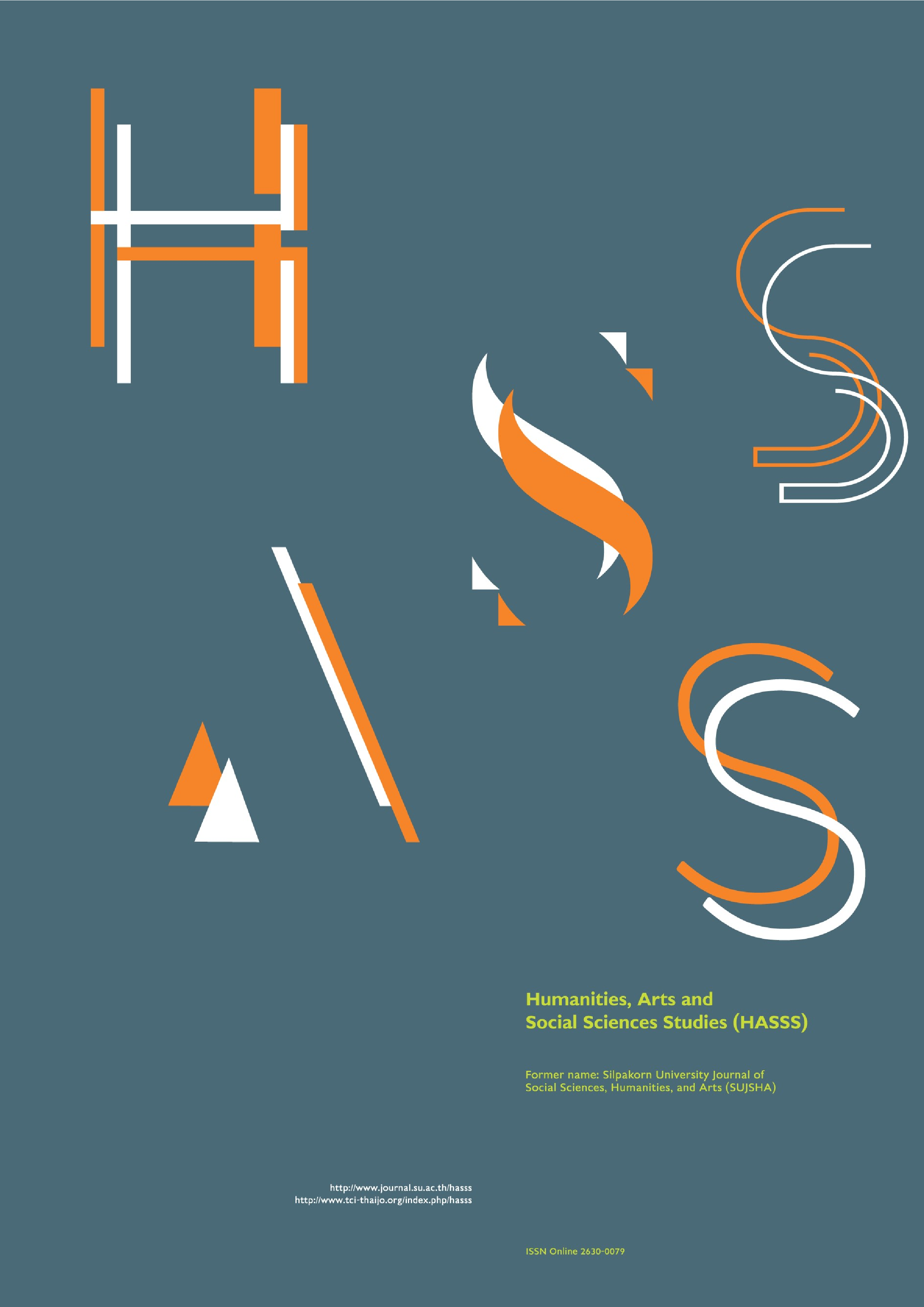Cultural exchange: A case study of Huizhou architecture Yin Yu Tang reassembly in the United States
Main Article Content
Abstract
In 1997, the Peabody Essex Museum (PEM) acquired the Yin Yu Tang (Hall of Plentiful Shelter), a historic Huizhou building situated in Xiuning County, Anhui province, China. This structure is a significant example of China’s Huizhou architectural heritage. It was shipped to the United States, and underwent meticulous reconstruction at the museum’s premises in Salem, Massachusetts. The objectives of this research were 1) to scrutinize the transplantation of architectural heritage within the Yin Yu Tang project, as well as its related cultural and traditional aspects; 2) to describe how Yin Yu Tang was "revitalized" in a new socio-cultural environment by providing an in-depth interpretation of Yin Yu Tang in a multicultural context; and 3) to examine the essential position of Yin Yu Tang in the overseas dissemination of traditional Huizhou architecture. This study adopts research methods in architectural culturology to conduct an analytical study, gathering information from existing documents in the United States and collecting data through interviews with key individuals in China. It is clearly shown that the "transplantation" of the Yin Yu Tang provides a valuable cross-cultural opportunity for the American public to gain insights into Chinese culture, architecture, customs, and family routines. It also encourages reflection on the importance of preserving historic buildings, not only from an architectural standpoint but also in terms of adapting to evolving values through the lens of architectural culture.
Downloads
Article Details

This work is licensed under a Creative Commons Attribution-NonCommercial-NoDerivatives 4.0 International License.
All rights reserved. Apart from citations for the purposes of research, private study, or criticism and review,no part of this publication may be reproduced, stored or transmitted in any other form without prior written permission by the publisher.
References
Avrami, E., Mason, R., & de la Torre, M. (2000). The spheres and challenges of conservation. In E. Avrami & R. Mason (Eds.), Value and heritage conservation (pp. 3–6). The Getty Conservation Institute.
Baidu Encyclopedia. (2023a). Mortise and tenon construction. Baidu Baike. https://baike.baidu.com/item/%E5%8D%AF%E6%A6%AB%E7%BB%93%E6%9E%84/511448?fr=geala [in Chinese]
Baidu Encyclopedia. (2023b). Introduction of Huangcun. Baidu Baike. https://baike.baidu.com/item/%E9%BB%84%E6%9D%91%E6%9D%91/4159234 [in Chinese]
Bluestone, D. (2000). Challenges for heritage conservation and the role of research on values. In E. Avrami & R. Mason (Eds.), Value and heritage conservation (pp. 65–67). The Getty Conservation Institute.
Chenglin, H. (1995). On the influence of Huizhou merchants on Huizhou culture. Human Geography, 10(4), 36–39.
Department of Culture and Tourism of Anhui Province. (2021). Huangshan City Huizhou Cultural and Ecological Protection Zone was pleased to be awarded by the Ministry of Culture and Tourism, only seven pieces in the country. Huangshan Culture and Tourism Bureau. https://wlj.huangshan.gov.cn/zwgk/public/6615733/10124255.html [in Chinese]
Hao, G. (2009). Human bonding: An anthropological analysis of gift flow in a rural wedding in southern Anhui. Journal of Tongren College, (5), 5.
Juan, C., & Pintong, S. (2023). A study of environmental adaptive transformation strategies for patios in Huizhou architecture. Academic Journal of Architecture, 76, 1–19.
Jun, X. (2018). Appreciation of Huizhou architectural culture and art. China Electric Power Press.
Li, H. (2014). “Transplanting” Yin Yu Tang to America: Preservation, value, and cultural heritage. International Association for the Study of Traditional Environments, 25(2), 53–64.
Peabody Essex Museum (PEM). (2023). Yin Yu Tang: A Chinese home. https://www.pem.org/yin-yu-tang-a-chinese-home
Story FM. (2023, July 10). In 1997, I moved Huizhou Architecture to the United States (Part 1). WeChat. https://mp.weixin.qq.com/s/_wYeqZJJxJ8dcfUPMdqyvg [in Chinese]
Yue, C., Qian, Z., & Xiangdong, Y. (2017). New Chinese architecture and garden design. Jilin Fine Arts Publishing House.
Yue, J., & Lin, L. (2024). Chinese New Year, the inheritance of Chinese traditional culture. Jiangxi Education, (8), 4–5.


